AMERICAN MOTORCYCLIST June 2020
Stacking the Deck for Great Photos
Tips From A Pro
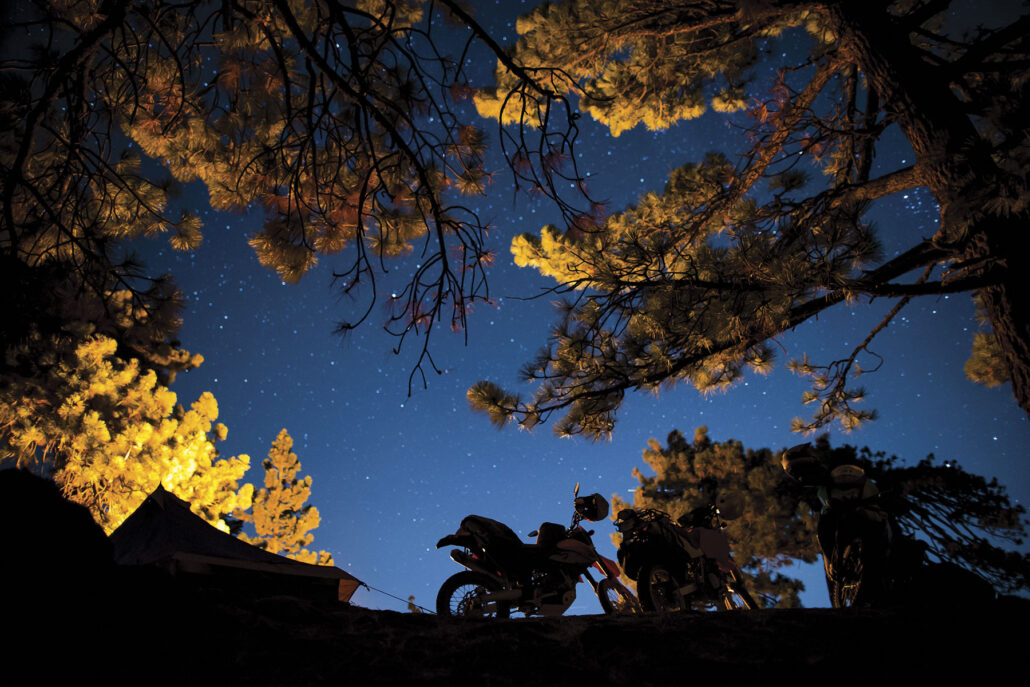 by Jeff Kardas
by Jeff Kardas
Capturing a moment in time from an epic ride is a fundamental part of motorcycling. Our favorite pastime takes us to places we wouldn’t otherwise go.
These days, it’s becoming rare to carry an actual stand-alone camera on these adventures. With modern smart phones and a few basic principles in mind (and we’re not talking shutter speeds and f-stops), you don’t need to carry a camera.
Using these basic photography principles, someone with good skills can shoot a better photo with a phone than a less skilled person with a great camera.
If you prefer to carry a separate camera, these same concepts can help raise your photography to new levels.
Also, be sure to read your camera’s manual. You will learn a lot by doing so.
There are several concepts that are tied for first in this breakdown. Framing the shot is one of them.
Simply put, framing means how the subject and the area around it fit into the space that the camera sees.
There are rules that apply, such as the Rule of Thirds. Check the accompanying photo to see how to break down the frame properly. Basically, the goal is to put the primary subject into one of the intersections of the lines
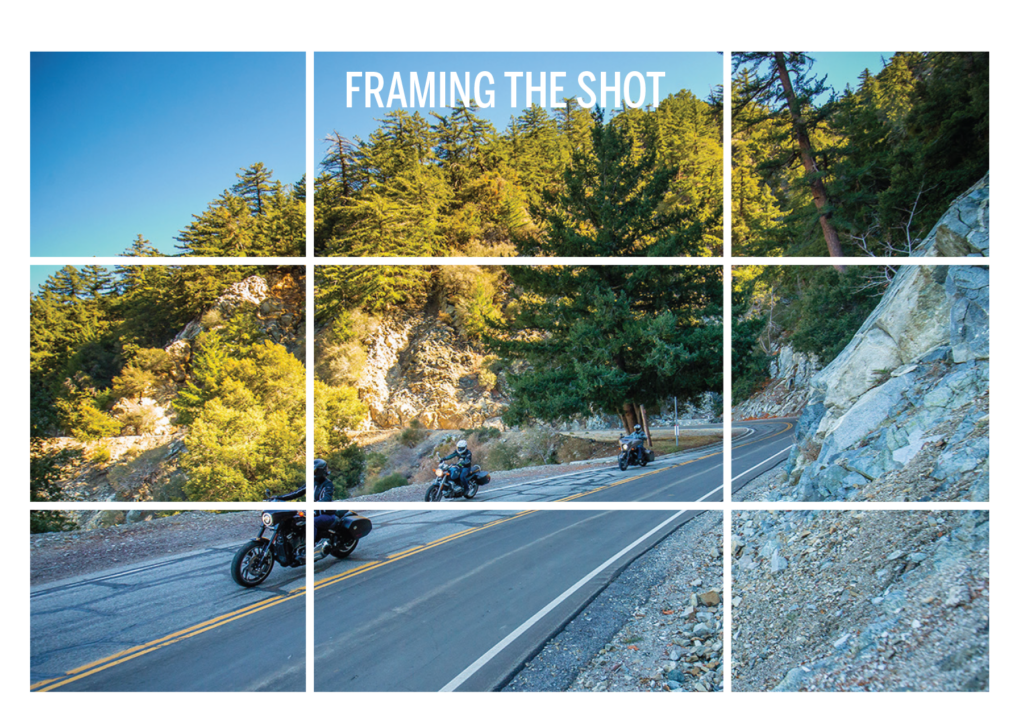
Why? Well, it’s been proven in various studies that the human eye just prefers it that way. It’s somehow more appealing and, well, we agree. If you take nothing else away from this concept, just go out of your way to not put the subject in the precise center of the frame.
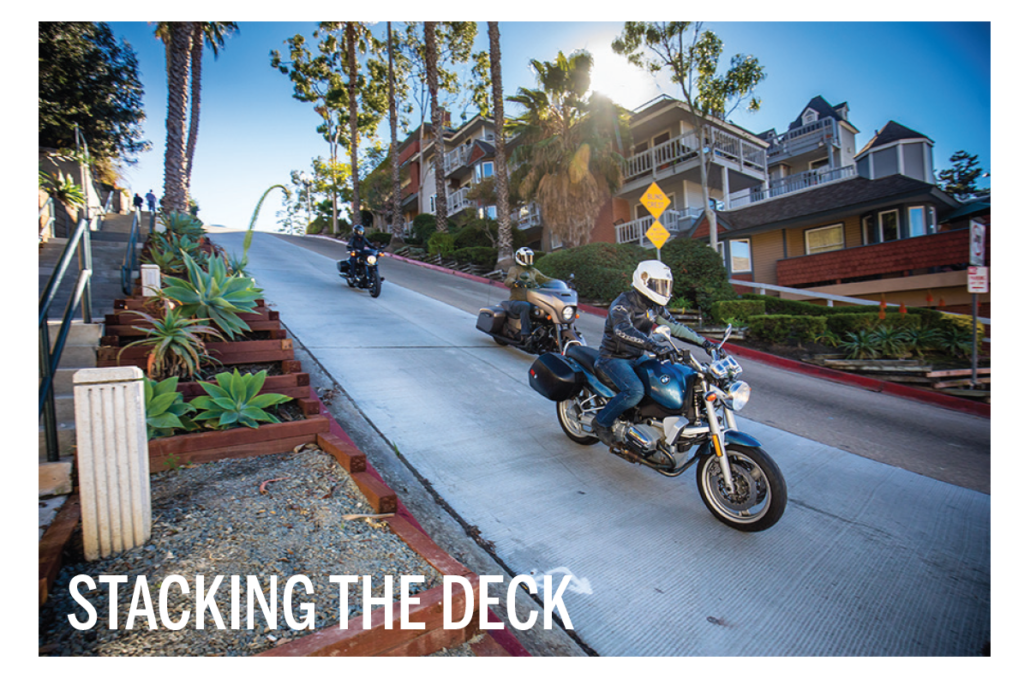 Try to feature interesting bikes, interesting riders, interesting location, colors that pop and action that is inspiring. Those elements will make your photo more attractive and help you remember how great that moment was.
Try to feature interesting bikes, interesting riders, interesting location, colors that pop and action that is inspiring. Those elements will make your photo more attractive and help you remember how great that moment was.
Much of this can be achieved by paying close attention to details. Clean the bikes up, get the bugs off the windscreen, have your buddy tuck his shirt in, wait for the guy walking the dog in the background to pass by and time the shooting for when the sun is closer to the horizon (aka the Golden Hour).

Another framing technique is to give a photo “depth.”
This is achieved by placing a vanishing point somewhere in the frame, as well as including something in the foreground, mid-ground and background.
A vanishing point can be the road itself. You look into the photo, down the road, into the background.
The result is that you’re pulled into the scene.
You can imagine what it was like to ride down that twisty piece of pavement.
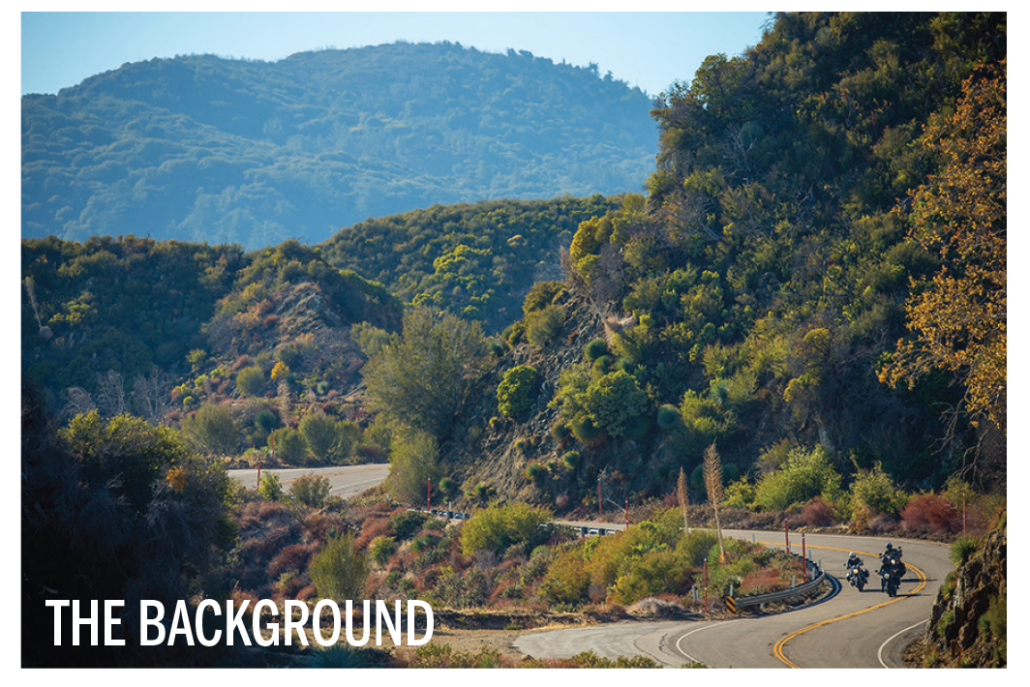 You’ve stacked the deck and done your best to clean everything up, but then you notice you put the subject in front of a row of porta-potties. The shot will now belong in one of them.
You’ve stacked the deck and done your best to clean everything up, but then you notice you put the subject in front of a row of porta-potties. The shot will now belong in one of them.
If the background itself isn’t photo worthy, then move your subject.
Busy backgrounds are better left avoided, particularly with smartphone cameras. Try to put the subject in a spot where the background becomes insignificant, which puts more emphasis on your buddy’s new adventure bike.
The goal is to isolate the subject, but not to exclude it entirely.
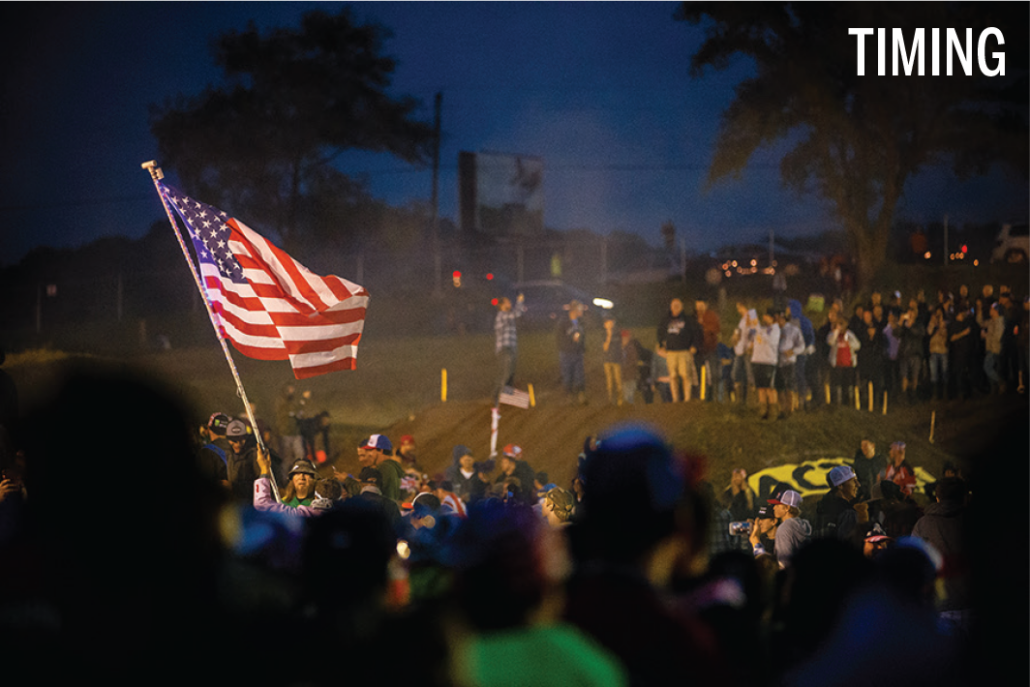
This tactic can apply to a variety of things, but primarily we mean that you should just be there.
Be there when the sunlight is best (closer to the horizon). Be in the right spot at the right time. Be ready for the rider when the motorcycle comes by. Time your shutter release for the most interesting point.
Think about what’s going on, predict the action, predict when you may get a wheelie from your friend on that CBR exiting a corner.
This all sounds like it could easily be included in stacking the deck, but if you aren’t there, you ain’t getting the shot.
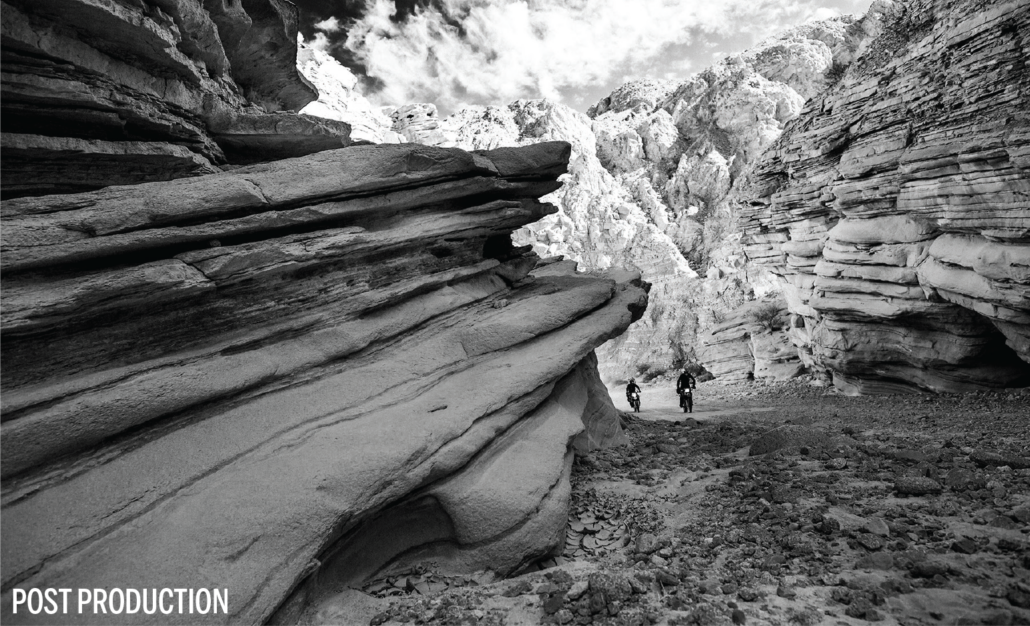
Post production is another fancy term that simply describes what you do to the photo after you shoot it.
Applying an Instagram filter to a shot you post is “post production” in its simplest form. Many smart phone cameras and galleries have software that allow you to edit photos on the phone.
Post processing is every bit as important as the production of the shot, but you can’t polish a bad photo.
You can make a well-conceived photo into something truly outstanding with little effort.
We want to see your results! Send us some photos ([email protected]) you’ve shot using these principles, and let us know how these tips helped.
